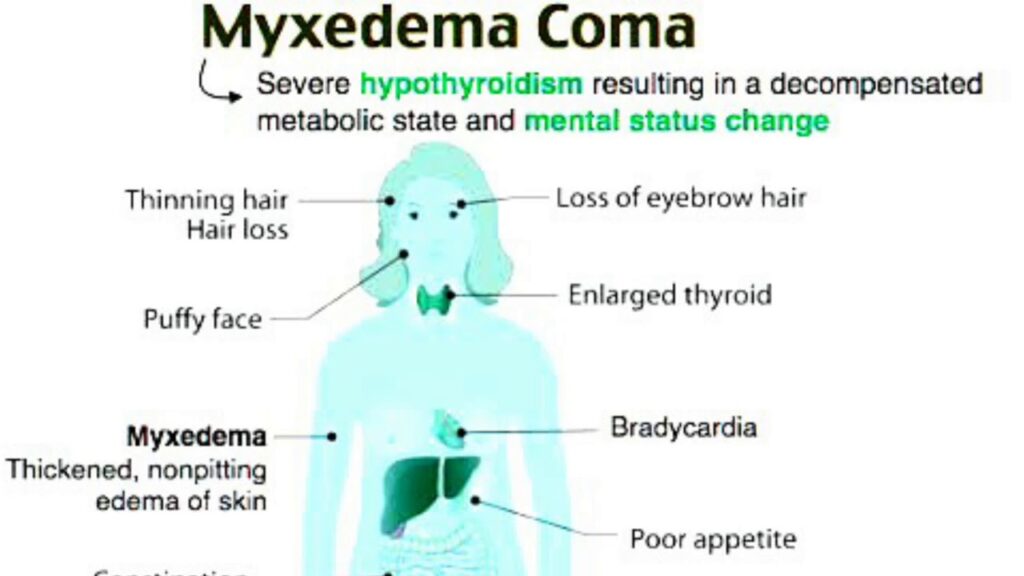Myxedema coma is a rare but life-threatening complication of severe hypothyroidism, characterized by altered mental status, hypothermia, and multi-organ dysfunction. It is considered an endocrine emergency requiring immediate medical intervention. This article explores the causes, symptoms, diagnosis, and treatment options for myxedema coma.

Understanding Myxedema Coma
What Is Myxedema Coma?
Myxedema coma is the most severe manifestation of hypothyroidism. Despite its name, patients may not always present with a true comatose state but typically exhibit extreme lethargy, confusion, or unconsciousness.
Pathophysiology
Hypothyroidism leads to reduced metabolic activity in various organ systems. In myxedema coma, the body’s ability to regulate temperature, cardiovascular function, and neurological processes is severely compromised.
Causes and Risk Factors
Primary Causes
- Long-standing untreated hypothyroidism – The most common cause.
- Post-thyroidectomy or radioactive iodine therapy – Leading to sudden hormonal depletion.
- Autoimmune thyroiditis (Hashimoto’s disease) – A primary contributor to severe hypothyroidism.
Precipitating Factors
- Infections (e.g., pneumonia, urinary tract infections)
- Cold exposure
- Trauma or surgery
- Sedative or narcotic use
- Stroke or heart failure
Symptoms and Clinical Presentation
Early Symptoms
- Fatigue and lethargy
- Cold intolerance
- Slow speech and movements
- Weight gain
Severe Symptoms
- Hypothermia (body temperature < 95°F)
- Bradycardia (slow heart rate)
- Hypotension (low blood pressure)
- Respiratory failure
- Altered mental status (confusion to coma)
Diagnosis
Laboratory Tests
- Thyroid-stimulating hormone (TSH): Elevated in primary hypothyroidism
- Free T4 levels: Low due to reduced thyroid hormone production
- Electrolyte imbalance: Hyponatremia (low sodium), hypoglycemia
- Arterial blood gas (ABG): Evaluates respiratory function
Imaging Studies
- Electrocardiogram (ECG): May show bradycardia or low-voltage QRS complexes
- Brain imaging (CT or MRI): Rule out other causes of altered mental status
Treatment and Management
Emergency Interventions
- Intravenous levothyroxine (T4) or liothyronine (T3) – Rapidly restores thyroid hormone levels.
- Hydrocortisone therapy – Addresses potential adrenal insufficiency.
- Mechanical ventilation – Assists breathing in respiratory failure cases.
Supportive Care
- Rewarming – Using heated blankets to correct hypothermia.
- Electrolyte correction – Balancing sodium, glucose, and other metabolic parameters.
- Infection treatment – If an underlying infection is present, antibiotics are administered.
Prevention
- Regular screening for thyroid dysfunction, especially in high-risk individuals.
- Compliance with prescribed thyroid hormone replacement therapy.
- Avoidance of sedatives and narcotics in hypothyroid patients.
- Early recognition and treatment of infections or other precipitating factors.
Myxedema coma is a medical emergency requiring immediate intervention. Early recognition and aggressive management significantly improve survival rates. Patients with known hypothyroidism should remain vigilant about their treatment to prevent this severe complication.

